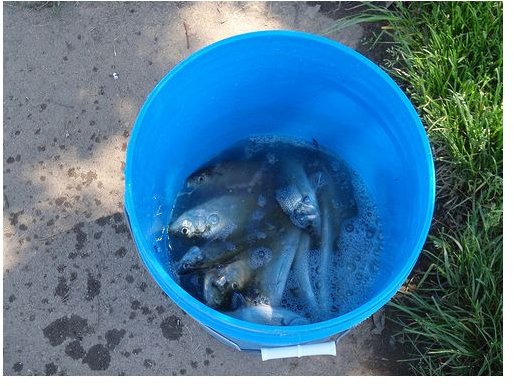How to Make Fish Emulsion for Fertilizing Indoor Gardens
Instead of using chemical fertilizers for your indoor garden, consider using fish emulsion. Fish emulsion fertilizer is natural and beneficial to most plants. It releases nutrients into the soil quickly and has few drawbacks. Read on to learn how to make fish emulsion for fertilizing indoor gardens.
What is Fish Emulsion?
Fish emulsion is a natural fertilizer made from raw fish. It can be produced from most types of fish, but the most common fish used to create fish emulsion is called menhaden. Fish emulsion is a combination of essential oils, that are extracted from the raw fish, and boiled by-products of processed fish. The broth is mixed with several chemicals, including phosphoric acid, in order to preserve it while in storage.
The Benefits of Fish Emulsion
Most fertilizers that are used in gardens release nutrients slowly into the soil. This is due to the fact that fertilizers must decay first, before the nutrients become available to the plants. Fish emulsion, on the other hand, provides nutrients directly to the plant. There isn’t a delay between applying fish emulsion and the availability of the nutrients to the plant.
Another difference between chemical fertilizers and fish emulsion is that fish emulsion doesn’t add salt to the soil. This is particularly advantageous for desert plants that are sensitive to salt.
The Downside to Fish Emulsion
Fish emulsion isn’t a long acting fertilizer, so frequent applications are usually required. Another downside to fish emulsion is the strong odor. Take precautions when handling both concentrated and diluted solutions of fish emulsion.
Preparing Fish Emulsion for Indoor Gardens
Indoor gardens are particularly receptive to fish emulsion. The following steps describe how to make fish emulsion for fertilizing indoor gardens.
Materials:
- container or bucket with lid
- raw fish
- dry leaves
- unsulfured molasses
- dried seaweed
- water
Directions:
Step 1: Place several raw fishes into an airtight container. The container should feature fresh cut up parts, minced canned fish, or gutted fish waste. Generally, live fish shouldn’t be caught for the sole purpose of producing fish emulsion. Also, avoid fishing from depleted fish stocks. If you raise fish in an aquarium for fish emulsion, go ahead and use that as a source.
Step 2: Add composting material to the container. This generally includes dry leaves, sawdust, or straw. At least one of these materials should be added in a 1:1 ratio with the fish. It will speed up the decomposition process of the fish components.
Step 3: The next step is to add about a quarter cup of unsulfured molasses, which is derived from untreated, mature sugar cane. Unsulfured molasses serves two functions in the production of fish emulsion. First, it promotes the growth of beneficial microbes. Secondly, unsulfured molasses suppresses the strong odor.
Step 4. Now, take two sheets of dried seaweed and shred them into small pieces. Nori, a Japanese seaweed, is one type of seaweed suitable for preparing fish emulsion. Place the shredded seaweed into a bowl of water and soak until the seaweed is soft. Then, pour the seaweed and water into the container.
Step 5. Stir the fish mixture periodically over several days and keep the container covered. After a week, the fish emulsion is ready. It can be applied directly to the soil or diluted with water.
Fish emulsion is a natural fertilizer with great benefits. It releases nutrients into the soil much quicker that standard chemical fertilizers. By following the above steps, you can produce fish emulsion at any time.
Image by Daquella manera from Flickr
Reference
1. https://www.phoenixtropicals.com/fishEmulsion.html
2. https://www.the-organic-gardener.com/fish-emulsion.html
3. https://www.gardenguides.com/95255-make-fish-emulsion-vegetable-plants.html
